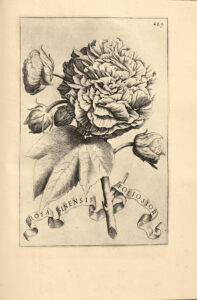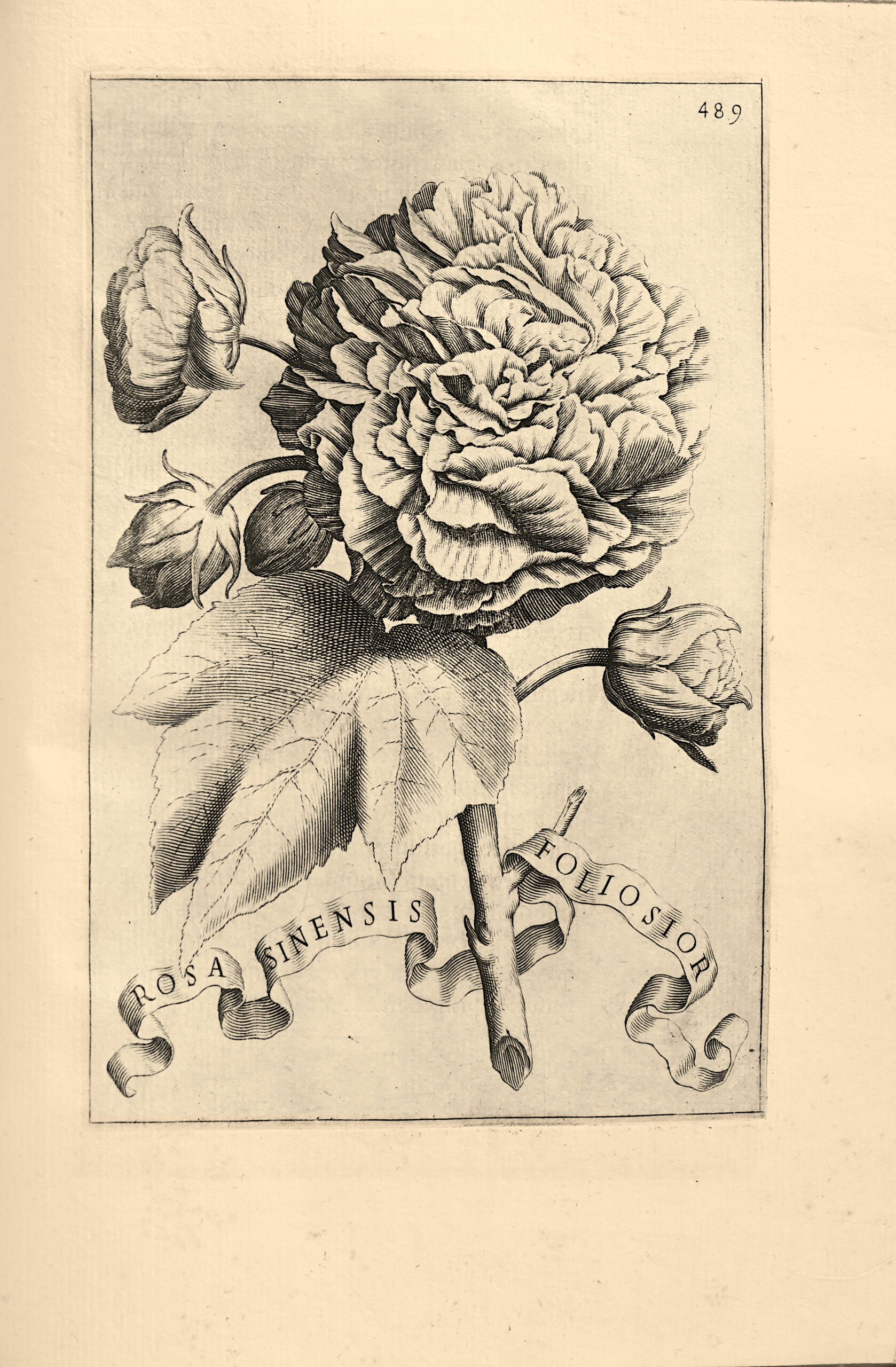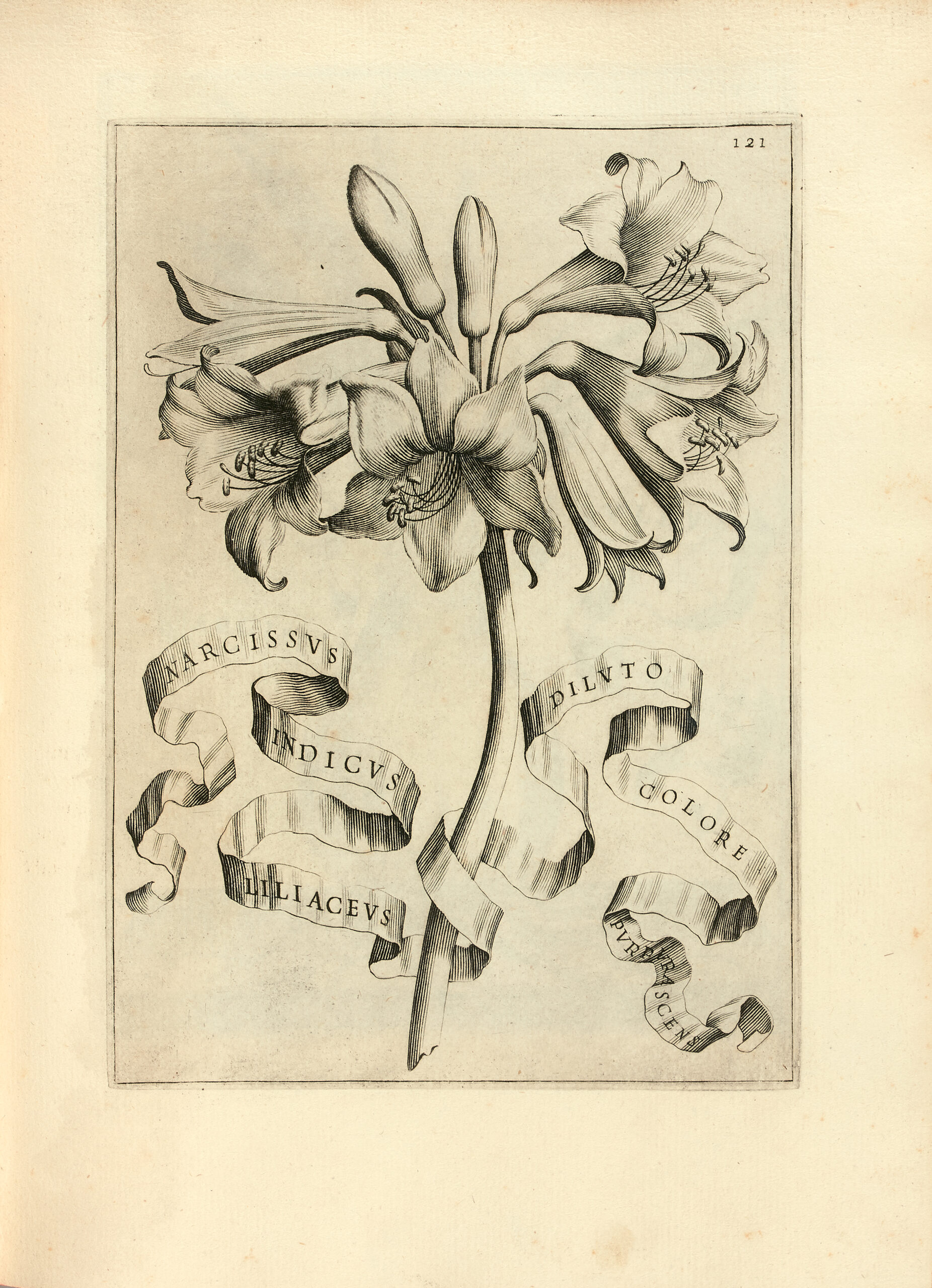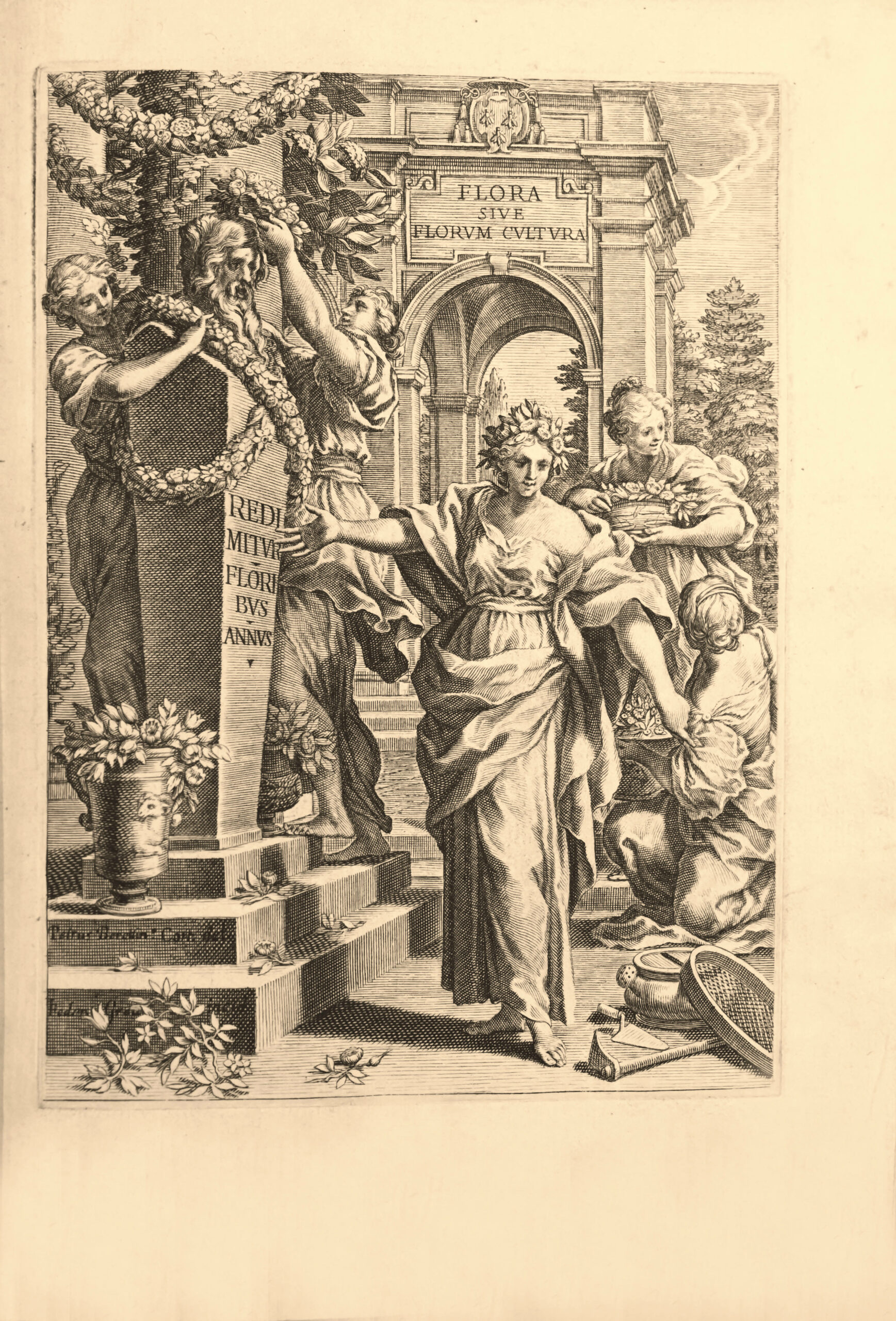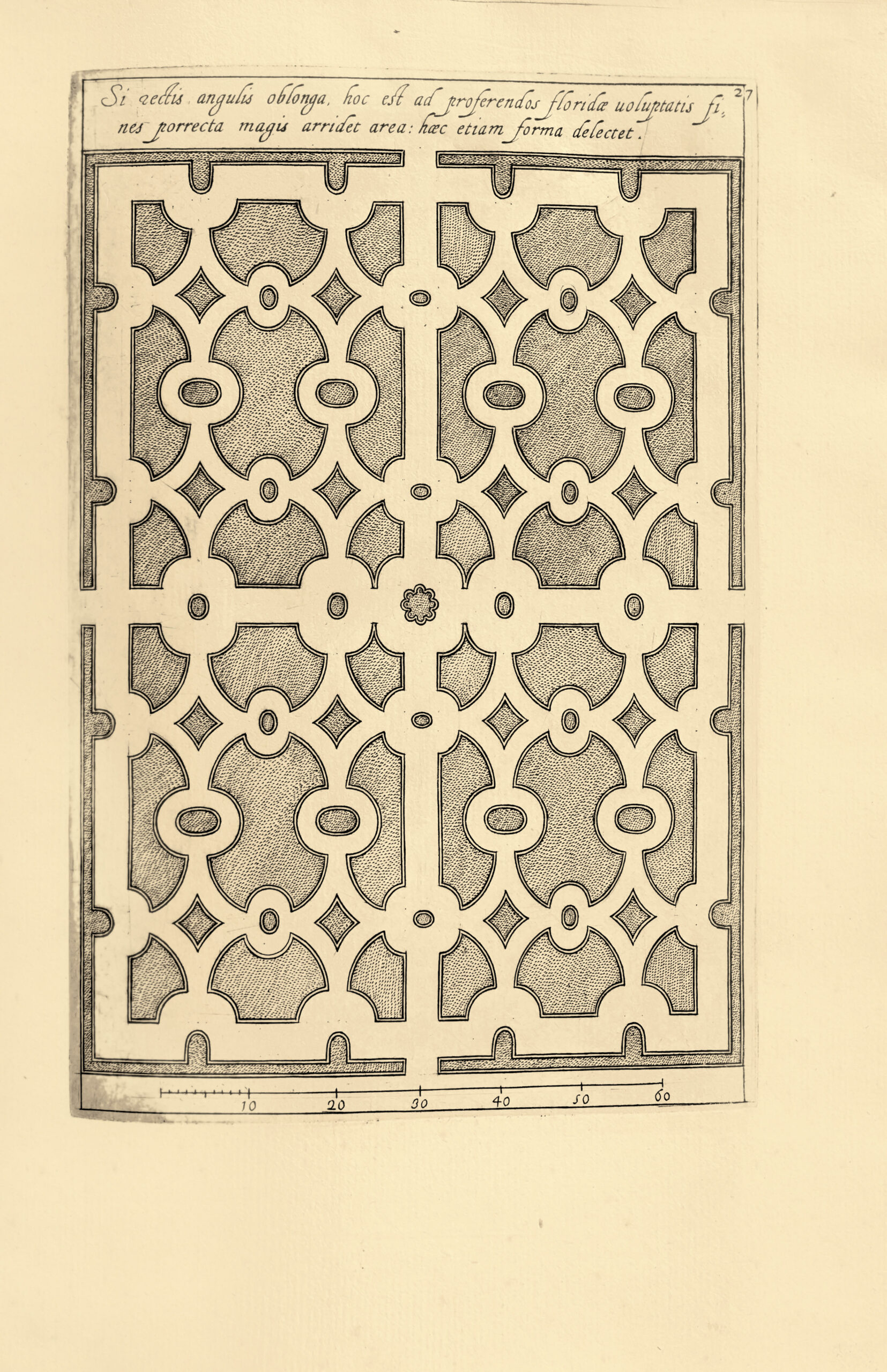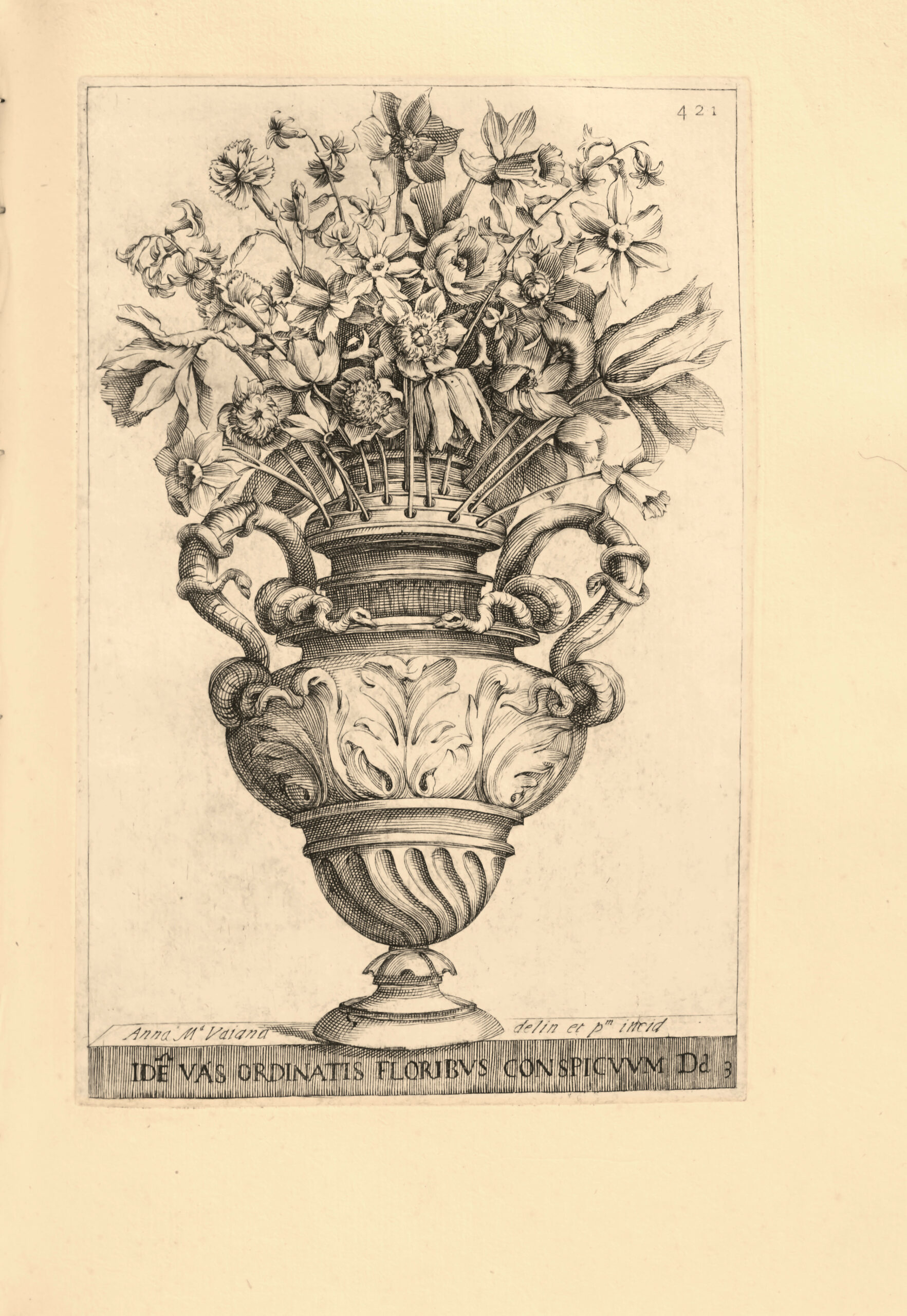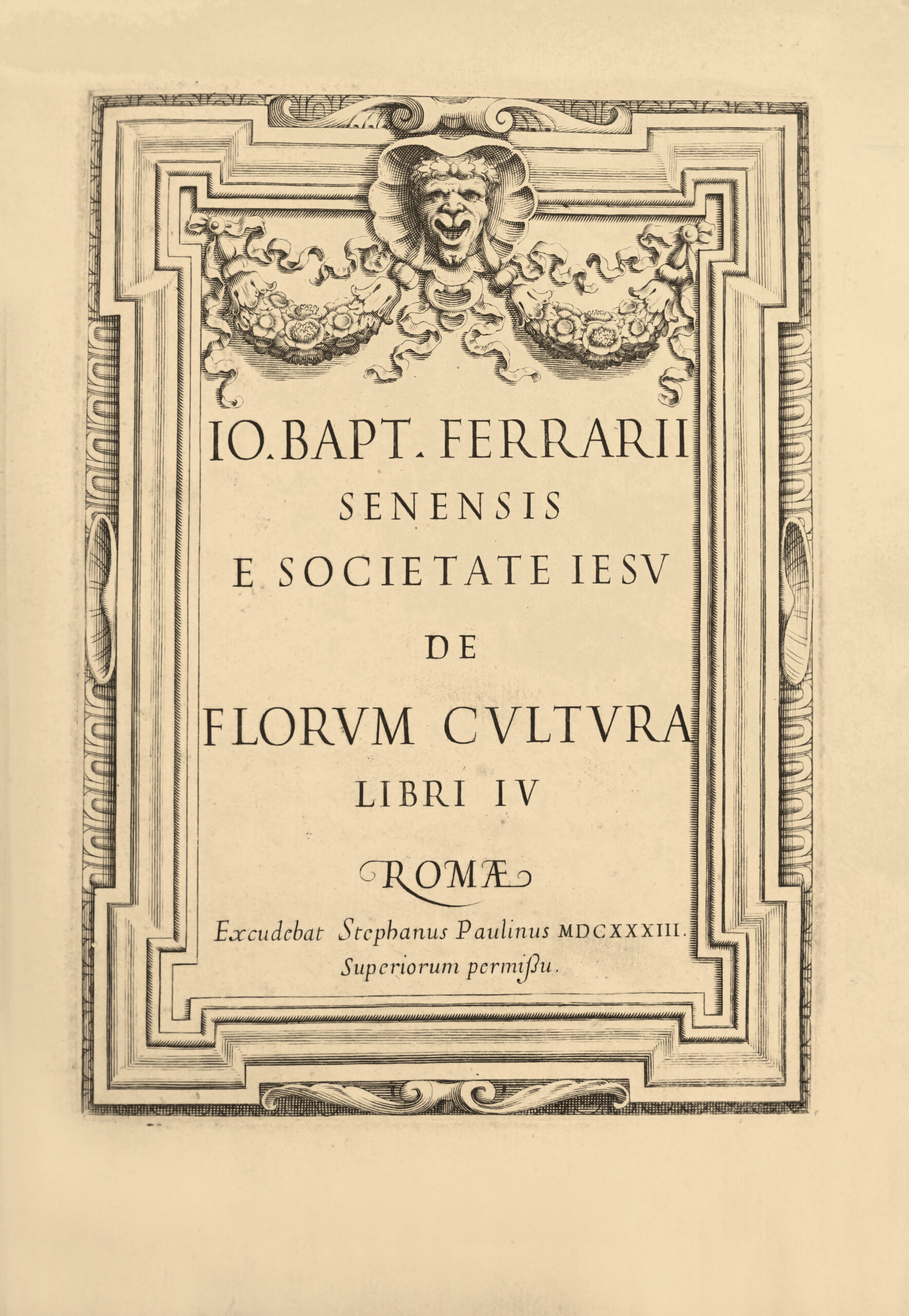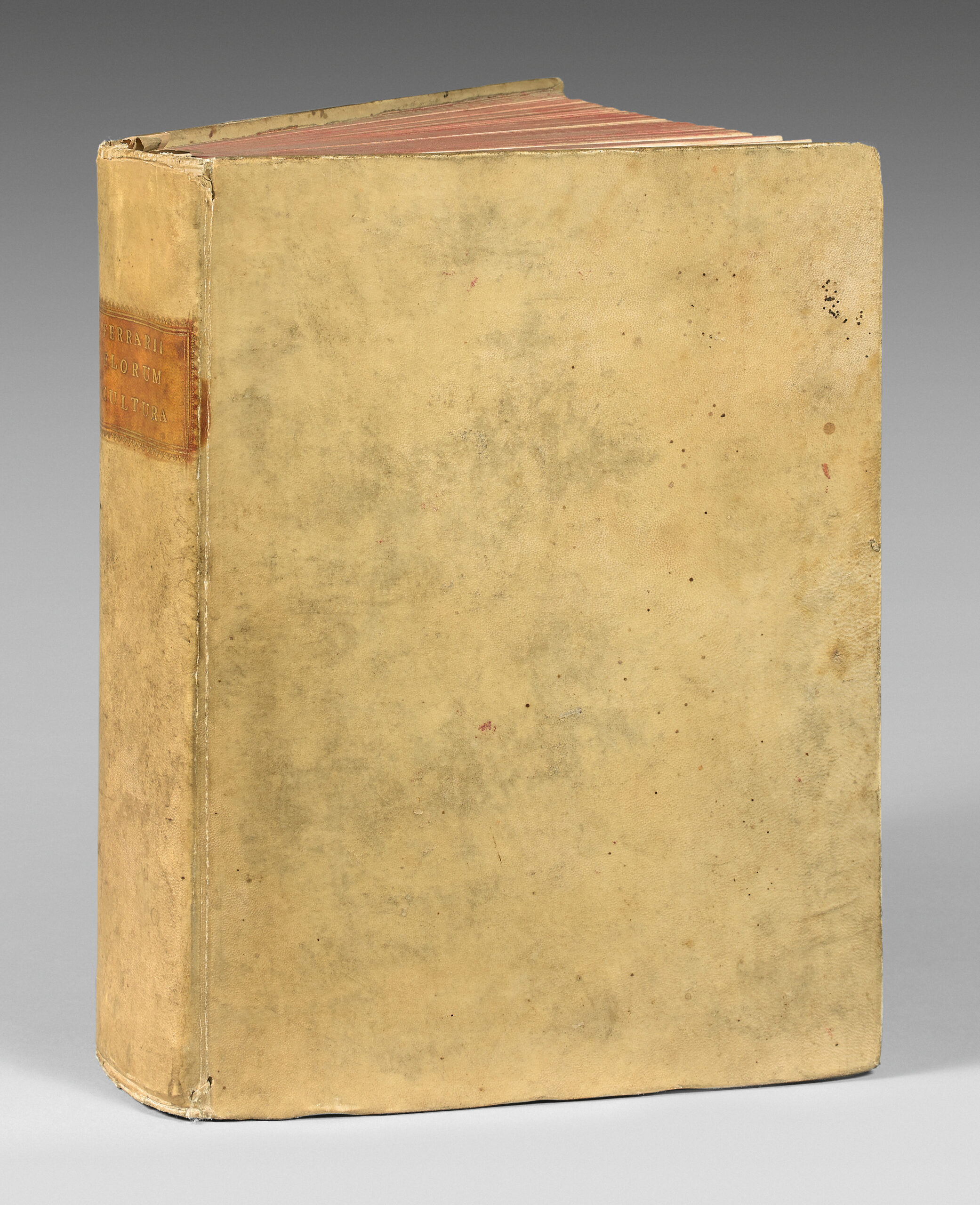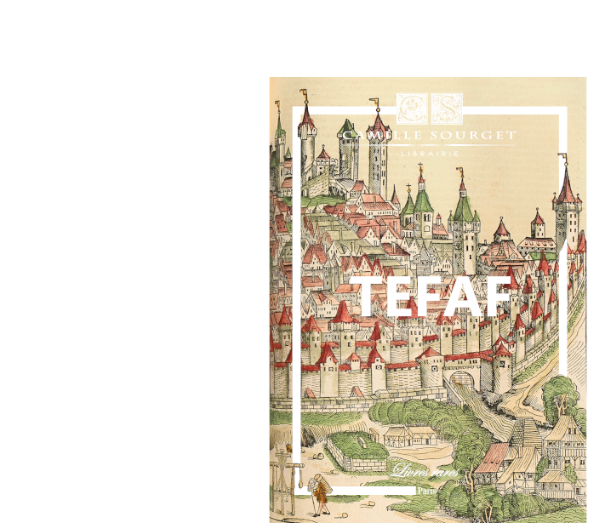Romae, Stephanus Paulinus, 1633.
4to of (12) pp., 524 pp. (wrongly numbered 522), (18) of which the last 3 are blank, small têr restored without loss in the lower margin of a page, a few pale waterstaining, 1 slightly shorter quire bound at the time. Full contemporary vellum, flat spine with morocco lettering-piece, red mottled edges. Contemporary Italian binding.
263 x 194 mm.
First edition of this masterpiece of the illustrated baroque book. Nissen, BBI, n°620; Pritzel, n°2877; Madeleine Pinault Sørensen, Le Livre de botanique, XVIIe et XVIIIe siècles, Paris, BnF, 2008, pp. 215-216. It comprises 47 plates included in the pagination, namely: a title, 7 mythological scenes, 24 botanical representations (including 4 of bouquets), 7 representations of tools, vases and supports alone, and 8 garden plans. The bêutiful botanical depictions were engraved by the Florentine painter and engraver Anna Maria Vaiani (who is also known to have been associated with Galileo), after drawings from the Museo cartaceo, the famous encyclopedic iconographic collection compiled by Cassiano Dal Pozzo. The mythological suite was composed by three grêt painters of the time: Pietro Berrettini, known as Piero di Cortona (author of 5 scenes), Guido Reni (one scene) and Andrê Sacchi (one scene). The engraving is the work of Claude Mellan (one plate) and Johann-Friedrich Greuter (6 plates). Giovanni-Battista Ferrari describes the main Roman gardens of his acquaintance, and in particular the superb botanical garden of palazzo Barberini at the Quirinal: cardinal Francesco Barberini, who financed the edition of De Flora Cultura, had gathered there the rarest exotic species recently introduced in Europe, such as the Cape Amaryllis, the Cape Hemanthus and the Chinese Rose. Ferrari also dêls with the composition and maintenance of gardens, the growing of flowers (including a passage on how to preserve them during long journeys), and the art of flower compositions. He drew on his own observations and extensive rêding, as well as the experience of enlightened horticulturists such as Tranquillo Romauli and Giovan Battista Martelletti. This work is also one of the first scientific books to contain illustrations made using a microscope: the plate showing 3 seeds of the Chinese Rose was drawn using a microscope from the Academia dei Lincei. The Jesuit orientalist and naturalist Giovanni-Battista Ferrari (1584-1655) had lêrnt Hebrew, Syriac and Arabic. He was a member of the commission responsible for translating the Bible into Arabic, prefect of studies at the Maronite College (1616-1619 and 1628) and professor of Hebrew, literature and grammar at the Roman College (1618-1647). He published numerous trêtises, particularly on prêching, but will go down in history for his two works on horticulture and botany, his main passions. As a member of Roman high society, he had access to the grêt Roman gardens and, thanks to Cardinal Barberini, was able to frequent lêrned and artistic circles, in particular Cassiano Dal Pozzo, Federico Cesi and the Academia dei Lincei. The Barberinis were patrons of his two books on natural history, the present De Florum cultura (1633) and the Hesperides (1646, the first monograph on citrus fruits), while Cassiano Dal Pozzo provided the botanical drawings on both occasions. A superb complete copy, preserved in its contemporary Italian vellum binding.
See less information
